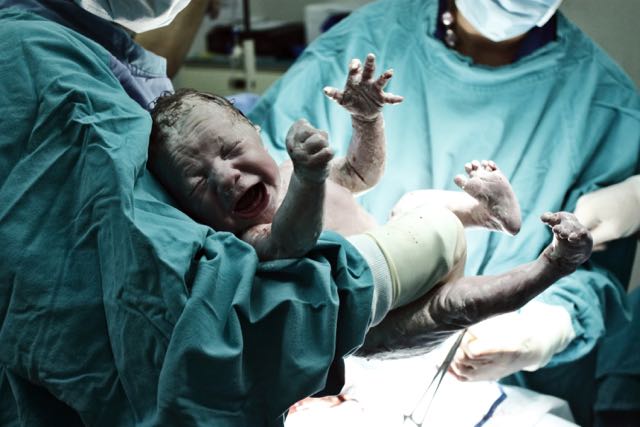A magazine where the digital world meets the real world.
On the web
- Home
- Browse by date
- Browse by topic
- Enter the maze
- Follow our blog
- Follow us on Twitter
- Resources for teachers
- Subscribe
In print
What is cs4fn?
- About us
- Contact us
- Partners
- Privacy and cookies
- Copyright and contributions
- Links to other fun sites
- Complete our questionnaire, give us feedback
Search:
Beep, beep, mummy. Here I come!
by Jane Waite, Queen Mary University of London

Babies about to be born are letting their mums know just how near they are to appearing in the big wide world thanks to a monitor from a team in Louisiana, USA. Electrodes on the baby's head and mum's body send data to a laptop that tells the mum what to do. It displays a graph showing a spike when it's time to push. It also creates a musical tone with a tempo that matches the baby's arrival.
Multimodal interaction is all about finding the most natural ways for humans and machines to talk to each other. Here, the computer is communicating with the mother and baby in several ways and none of it involves pushing buttons! The baby-to-be can't tell the computer when its coming - no one has taught it to use a computer after all. Instead the computer picks up both its and the mother's natural movements via the electrodes - a natural movement-based, or gestural, interface - and works it out for itself. The graph gives the midwife the bigger picture of what is happening so she can help. It may help the mum too, but she isn't in a position to easily focus on a screen. It's hard to concentrate when you are screaming! Humans are very good at following the tempo in music though - it is what dancing is all about. Music is a very natural way for the mum to lock in to the rhythm of the baby, telling her what's happening in her body, motivating the next push. This moment by moment feedback from the baby lets the mum-about-to-be hear and see just how close she is to meeting her beautiful new baby.
Knowing when to push is very important! Mums often spend hours, even days in labour. That means wave after wave of extreme pain. It not only hurts, it's exhausting and many mothers need drugs to endure it. But the drugs mean she can't feel what is going on as well, so she doesn't know when to push. That means the labour can take longer and the longer the pushing time the greater the risks to mother and baby. The monitor can really help as the change in tone and the peak in the graph tell mum it is time to push now! Yes now!
When the musical monitor was trialled, it dramatically reduced the length of pushing time, on average from 77 minutes to 58 minutes. Fewer drugs were needed to safely deliver these new tiny people into the world and the risks associated with longer labours was reduced for mum and baby.
Using gadgets isn't always about people pushing buttons. Get the interaction design right and it can make pushing babies out less painful too.


